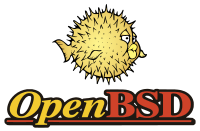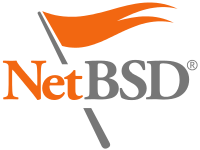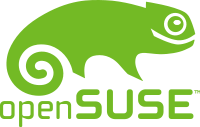Unix
Before talking about Linux, you must know what Unix is. In a broad sense, Unix is a multitasking, multiuser operating system. More specifically, UNIX, is a set of specifications for an OS (Single Unix Specification). Unix is also a philosophy where a program is small, modular, simple but powerful and can work by combining it with other programs. More here. Unix was born in AT&T's Bell labs in 1969. It has since grew into the mostly widely used system for servers, workstations and embedded devices (counting all Unix like systems). There are a few operating systems that are licensed to call themselves Unix systems as they have been certified. Currently active ones are:
- IBM AIX
- Oracle (formerly Sun) Solaris
- HP UX
- Apple macOS
Other, now legacy, Unix systems:
- SGI Irix
- DEC Tru64 aka Digital UNIX
- DEC ULTRIX
- BSD (pre Open Source)
- AT&T UNIX System V
Free Unix Variants
Typically, licensed Unix systems are commercial and proprietary software. However, one of them, BSD is no longer Commercial Proprietary Software (CPS). BSD stands for Berkeley Software Distribution. BSD has since been released as open source software. Its modern day free & open source implementations are:
Also note that part of Apple Mac OS X is based on the BSD flavor as opposed to the System V Unix family. Also note that part of OS X, called Darwin, is FOSS.
Linux
Finally we get to Linux. Linux is a Unix-like free & open source operating system. This is the general definition. However, the strict definition is that it is a kernel only. A kernel is the core of an OS. In 1991 Linus Torvalds created the first Linux kernel. Since then several people and even companies and organizations contributed code to the Linux kernel. Today Linux is used on a wide variety of platforms: servers, desktops and laptops, super computers, mainframes, smartphones, TVs, storage products, networking equipment, car computers, media players, etc...
What some call Linux is actually the combination of the Linux kernel and an accompanying set of software, usually the GNU utilities, and more. Some refer to that as GNU/Linux. GNU is a combination of FOSS and useful part of an OS. In any case, Linux is mostly distributed with a full set of software to make a complete OS and is distributed as such. That is called a Linux Distribution. There are several Linux Distribution. The difference between them is the combination of software packages of varying versions and the manner the system is administered. Some distributions use the same packaging system and have similar philosophy as others and are group together as they are based on the same original distribution. This is called a Distribution Family or Flavor. Here are examples of the more popular ones:
- Red Hat Family
- Debian Family
- Suse Family
If you haven't already, please take a look at the FOSS section for an understanding of Free and Open Source Software.
Choosing a Linux Distribution
Choosing a distribution can be a daunting task, as they are hundreds of Linux distributions. Choosing one will depend on many factors. Unless you needs are specific, I recommend sticking to the main families. Note that some distributions are by corporate entities, i.e. Red Hat Enterprise Linux by Red Hat, Suse Enterprise Linux by Novell, etc... These distributions are available for purchase. Since it is FOSS, what you are actually buying is the compiled (or binary) form of the software, updates and support. Since they are covered by the GPL (GNU Public License), these companies must make the source code available for free, which they do. Therefore anyone can take the source and compile and package it themselves. This gave birth to clones. For example, CentOS and Scientific Linux are clones or Red Hat Enterprise Linux (minus copyrighted artwork and trademarked logos and names).Red Hat Family
The company Red Hat released their first distribution, Red Hat Linux 1.0, in 1994. They released several versions under that name until 2003 with version 9.0 as the last. In 2002, Red Hat started with a new distribution called Red Hat Enterprise Linux (RHEL) aimed at enterprise clients, available for purchase. Around the same time, they also started a community based distribution called Fedora (Fedora Core at the time), which was available to download for free. The aim for Fedora would be for bleeding edge technologies. They take what works well in Fedora and integrate it in the their enterprise product. As mentioned earlier, since the source code for RHEL is available, other distribution where born. Distribution like CentOS and Scientific Linux. These are clones of RHEL with a few modifications. The differences is that the clones are available for download for free. A common item among the Red Hat Family is the use of rpm and yum for package management (the newer Fedoras use PackageKit).
Red Hat based Linux Distributions

Red Had Enterprise Linux

CentOS

Scientific Linux

Fedora
Note: there are more, but I only list the most popular.
Debian Family
Like Red Hat [Enterprise] Linux, Debian was one of the early distributions that is still around. The Debian project is made up of a community of users. It was first released in 1993. One of the differences with the Red Hat family is that the packages are distributed as .deb instead .rpm and the package manager is apt. In 2004, an offshoot of Debian, called Ubuntu, was released. It was meant to be a user-friendlier Linux distribution. A company, Canonical, is behind Ubuntu. In 2006, another distribution was born, Linux Mint. It is based of Ubuntu. You can also get a version that's directly based from Debian instead. Linux Mint is meant to be even easier to use and be ready-to-use since it includes many non-free software that is not included by default in Ubuntu or Debian. Debian, Ubuntu and Linux Mint are all free to download. Also, Debian is composed of the Linux kernel and GNU utilities, called Debian GNU/Linux, like most Linux distributions, but also can come with the FreeBSD kernel called Debian GNU/kFreeBSD.
Debian based Linux Distributions

Debian GNU/Linux

Ubuntu

Linux Mint
Note: there are more, but I only list the most popular.
Suse Family
Another old Linux Family is SUSE. It was first released in 1994. Like Red Hat, it too is backed by a company. Novell, then Attachemate Group. Like RHEL, SUSE Linux Enterprise Server (and Desktop) can be purchased and is aimed for the enterprise market. But also like Red Hat, it has a community based bleeding edge distribution called OpenSUSE (like Fedora for Red Hat) started in 2005. Finally, like Red Hat, it too uses .rpm packages. However, it uses zypper as the package manager.
Other Distributions
Finally there is also worth mentioning other notable Linux distributions like Slackware, Arch Linux, Gentoo and Linux From Scratch. These are for more advanced users as they are not as user friendly as the previously mentioned distros. However, they make for excellent learning tools for Linux.
Links
- https://en.wikipedia.org/wiki/Unix - Unix on Wikipedia.
- https://www.unix.org/what_is_unix.html - Unix definition by the trademark owners.
- https://en.wikipedia.org/wiki/AIX - AIX on Wikipedia.
- https://en.wikipedia.org/wiki/Solaris_(operating_system) - Solaris on Wikipedia.
- https://en.wikipedia.org/wiki/HP_UX - HP UX on Wikipedia.
- https://en.wikipedia.org/wiki/Mac_OS_X - Mac OS X on Wikipedia.
- https://en.wikipedia.org/wiki/BSD - BSD on Wikipedia.
- https://en.wikipedia.org/wiki/FreeBSD - FreeBSD on Wikipedia.
- https://en.wikipedia.org/wiki/OpenBSD - OpenBSD on Wikipedia.
- https://en.wikipedia.org/wiki/NetBSD - NetBSD on Wikipedia.
- https://en.wikipedia.org/wiki/Linux - Linux on Wikipedia.
- https://en.wikipedia.org/wiki/GNU - GNU on Wikipedia.
- https://en.wikipedia.org/wiki/Red_Hat_Enterprise_Linux - RHEL on Wikipedia.
- https://en.wikipedia.org/wiki/Debian - Debian on Wikipedia.
- https://en.wikipedia.org/wiki/SUSE_Linux_distributions - SUSE on Wikipedia.
- https://en.wikipedia.org/wiki/List_of_Linux_distributions - List of Linux distributions on Wikipedia.
- https://en.wikipedia.org/wiki/Free_and_open_source_software - FOSS on Wikipedia.









